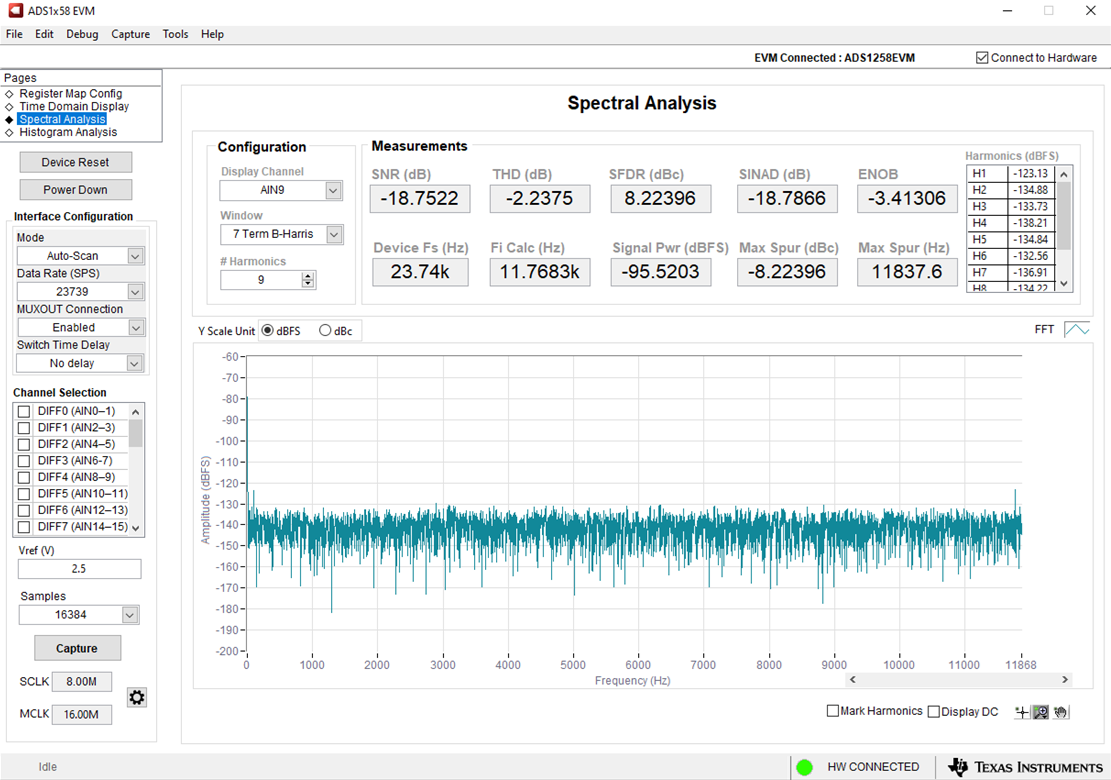SBAU126E may 2007 – june 2023 ADS1158 , ADS1258
7.4 Frequency-Domain Display
Figure 7-5 shows the spectral analysis tool that evaluates the dynamic performance (SNR, THD, SFDR, SINAD, and ENOB) of the ADS1258. This dynamic performance is calculated by single-tone sinusoidal signal FFT analysis using the 7-term Blackman-Harris window setting. The FFT tool includes windowing options that are required to mitigate the effects of non-coherent sampling (this discussion is beyond the scope of this document). The 7-term Blackman-Harris window is the default option and has sufficient dynamic range to resolve the frequency components of a 24-bit ADC. The None option corresponds to not using a window (or using a rectangular window) and is not recommended.
 Figure 7-5 ADS1258EVM GUI Frequency
Domain Display Page
Figure 7-5 ADS1258EVM GUI Frequency
Domain Display Page